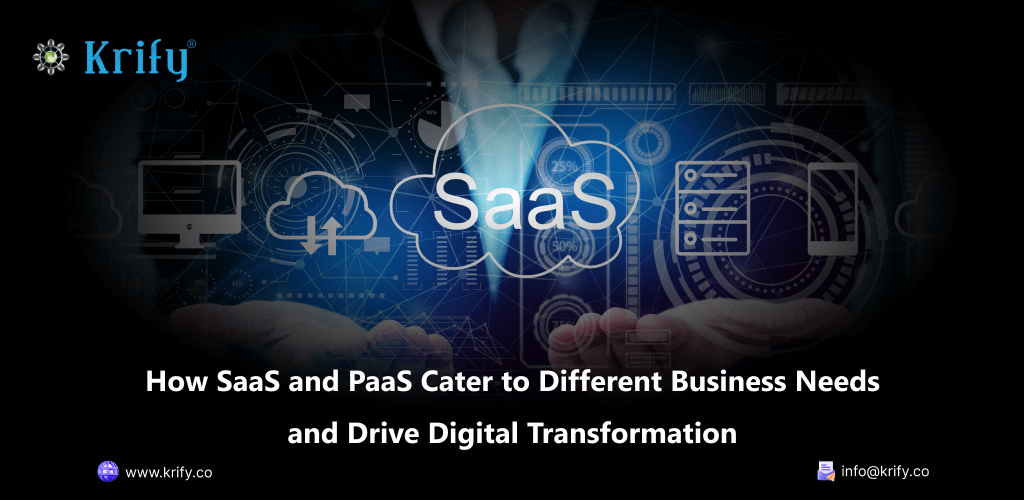In the fast-paced digital landscape, businesses are constantly seeking innovative solutions to stay competitive and meet evolving customer demands. Software as a Service (SaaS) and Platform as a Service (PaaS) have emerged as indispensable tools, offering distinct advantages in driving digital transformation. This blog explores how SaaS and PaaS cater to different business needs, empowering organizations to embrace digitalization and thrive in the digital age. With “SaaS and PaaS Propel Digital Transformation,” businesses unlock new potentials.
Understanding SaaS: Streamlining Software Delivery
SaaS revolutionizes software delivery by offering applications over the internet, accessible from any device with an internet connection. With SaaS, businesses can leverage a wide range of software solutions without the burden of installation, maintenance, and updates. This subscription-based model provides scalability, flexibility, and cost-effectiveness, making it ideal for businesses of all sizes.
Leveraging SaaS for Operational Efficiency
SaaS solutions span across various business functions, including customer relationship management (CRM), enterprise resource planning (ERP), human resources (HR) management, and collaboration tools. By adopting SaaS applications, businesses can streamline operations, improve productivity, and enhance collaboration among teams. Moreover, the pay-as-you-go model of SaaS allows for easy scalability, enabling businesses to adapt to changing needs seamlessly.
Empowering Business Agility with PaaS
PaaS offers a comprehensive platform for developing, deploying, and managing applications without the complexities of infrastructure management. With PaaS, developers gain access to a suite of tools, frameworks, and services to accelerate the application development lifecycle. This enables businesses to innovate rapidly, iterate on ideas, and bring new products and services to market faster than ever before.
Building Custom Solutions with PaaS
Unlike off-the-shelf SaaS applications, PaaS provides the flexibility to build custom applications tailored to specific business requirements. Developers can leverage PaaS platforms to create scalable, secure, and highly available applications, integrating with existing systems and databases. This level of customization empowers businesses to differentiate themselves in the market and deliver unique value to customers.
Driving Digital Transformation with SaaS and PaaS
SaaS and PaaS play complementary roles in driving digital transformation initiatives within organizations. SaaS speeds up software adoption for efficiency and engagement, while PaaS fosters innovation with agile development. Together, they empower businesses to adapt, embrace new tech, and outpace competitors.
Seamlessly Integrating SaaS and PaaS Solutions
Maximizing SaaS and PaaS benefits requires prioritizing integration for seamless interoperability, data sharing, workflow automation, and real-time insights, enhancing digital ecosystems. Additionally, APIs and middleware foster connectivity between platforms.
Overcoming Challenges and Maximizing ROI
While SaaS and PaaS offer significant benefits, businesses may encounter challenges such as data security concerns, vendor lock-in, and integration complexities. To mitigate these challenges, organizations must prioritize data security measures, conduct thorough vendor evaluations, and invest in robust integration strategies. By doing so, businesses can maximize the return on investment (ROI) of their SaaS and PaaS initiatives while mitigating risks associated with digital transformation.
Conclusion:
SaaS and PaaS Propel Digital Transformation and enabling business agility in today’s competitive landscape. Using SaaS and PaaS enables businesses to adapt, enhance customer experiences, and achieve sustainable growth in dynamic markets. Embracing the synergies between SaaS and PaaS, organizations can unlock their full potential and thrive in the digital era.









